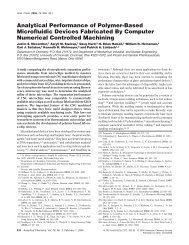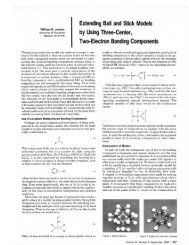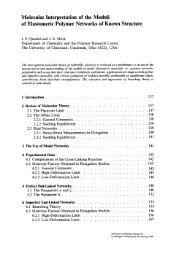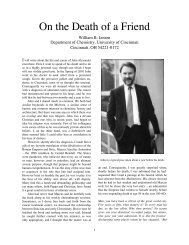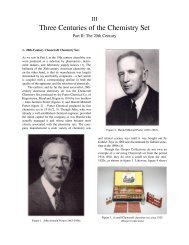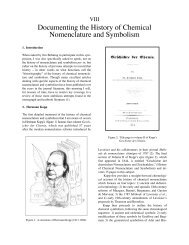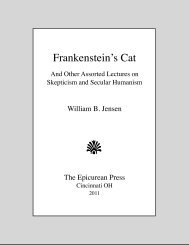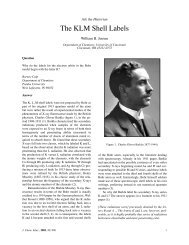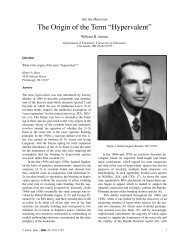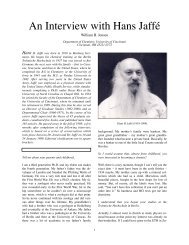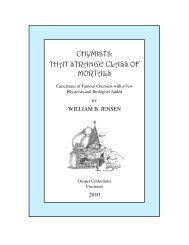The Leyden and Stockholm Papyri - University of Cincinnati
The Leyden and Stockholm Papyri - University of Cincinnati
The Leyden and Stockholm Papyri - University of Cincinnati
Create successful ePaper yourself
Turn your PDF publications into a flip-book with our unique Google optimized e-Paper software.
However, after you have dipped the wool in several times, lift it<br />
out. Add to the pomegranate blossom water about a ball <strong>of</strong> alumed<br />
archil <strong>and</strong> dye the wool by judging with the eye. If you wish, however,<br />
that the purple be dark, add a little chalcanthum <strong>and</strong> let the<br />
wool remain long in it. In another passage it is in the following<br />
way: But if you wish that the purple be dark, then sprinkle natron<br />
<strong>and</strong> a little chalcanthum in the dye bath.<br />
96. Dyeing in Purple<br />
Purple. Roast <strong>and</strong> boil Phrygian stone. Leave the wool therein<br />
until it becomes cold. <strong>The</strong>n lift it out, put 1 mina (each) <strong>of</strong> archil<br />
<strong>and</strong> amaranth in another vessel, boil then <strong>and</strong> lei the wool cool<br />
down in it.<br />
Phrygian stone was evidently some kind <strong>of</strong> a mineral capable <strong>of</strong><br />
yielding soluble salts. It may have been a type <strong>of</strong> alunite according<br />
to Berthelot. This would explain its use in mordanting.<br />
97. Another (Recipe)<br />
Take the wool <strong>and</strong> clean with soap weed. Take blood stone <strong>and</strong> put<br />
it in a kettle. Put therein previously boiled chalcanthum. Put in the<br />
wool previously mordanted in urine, alum, <strong>and</strong> misy. Lift the wool<br />
out, rinse it with salt water, let it become cold, <strong>and</strong> brighten the<br />
purple with gall-nut <strong>and</strong> hyacinthe. It has a very beautiful foreign<br />
appearance.<br />
“Bloodstone” is identical with our hematite while “misy” was either<br />
iron or copper pyrites or oxidation products <strong>of</strong> these (see<br />
Pliny, Natural History, Book XXXIV, 31). “Hyacinthe” was some<br />
kind <strong>of</strong> a vegetable dyeing material.<br />
98. Another (Recipe)<br />
THE STOCKHOLM PAPYRUS<br />
Take <strong>and</strong> boil grain weevils, dross <strong>of</strong> iron <strong>and</strong> laurel berries. Put in<br />
2 minas <strong>of</strong> wool, which you have previously mordanted, <strong>and</strong> now<br />
- 71 -



